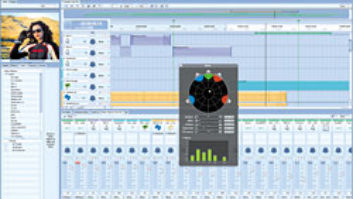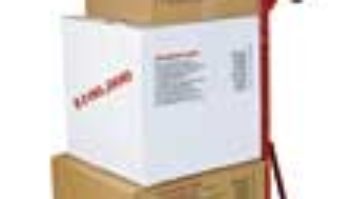If you’ve been reading “The Bitstream,” then you know I try to cover technology that, while not explicitly audio, nonetheless impacts your production environment now or in the near future. The slant for this column is convergence, and this month, the stars are assembled into a rare alignment that permits me to address the converging of several disciplines toward a potent prognostication.
Here are the facts:
- Brocade has debuted the 1200 switch,
- Cisco has debuted the SN 5420 router,
- SNIA has proposed a common HBA API,
- Fibre Channel on the motherboard has arrived,
- I have actually seen FibreToTheHome.
Let’s detangle this jargon and see why these five events are important to you. First, the top two items: You have two industry leaders introducing products that promise to support wider ranges of protocols in single boxes than have been seen up to this point. Brocade’s 1200 is a director-class switch that just happens to support 1, 2 and 10GB versions of Fibre Channel (FC), but also iSCSI and InfiniBand. A fabric connection from anything to anything: That’s radical! Scalability, availability and forward compatability via modular design means that, like everything else mentioned this month, you’ll pay through the nose for it; but we’re talking a tsunami-class sea change comin’ over the bow.
Cisco’s contribution is, on the face of it, just another (yawn) router. But wait, look closely, and ye shall see that it supports iSCSI along with traditional IP traffic. This means that you can now route your storage traffic with the low cost and ease of management that you’d expect from TCP/IP and the QoS (Quality of Service) you’d typically get from Fibre Channel. Security, long a weakness of basic FC, should improve. However, although iSCSI will, in the long run, win in the storage arena because of reduced cost, FC is the current performance king for storage, and the DVD family is still the broadband delivery medium of choice.
I don’t know about you, but I spend way too much time managing IT resources, and we all like to cut management expenditures. Well, SNIA, the open industry watchdog for networked storage, has proposed a common HBA, or Host Bus Adapter, API that can be shared by the industry. This translates into different HBAs from various vendors all appearing as peers in an IT manager’s management application of choice, which is not currently the case. (Each vendor uses some subset of open or proprietary protocols for monitoring and control of its HBAs, so you never know what method will work for a particular product.)
This initiative assumes that, in the long term, vendors will realize that working for their customers is more profitable than working exclusively for their investors [insert OMas mantra here: Open Is Good]. We’ll see if the industry embraces the open approach to management, but we can dream, can’t we?
For demanding storage applications, like high-density, multi-user media production, networked storage makes fiscal sense. But initial expenditure and reoccuring costs can be daunting. Now, manufacturers have taken a subtle but important step, moving their controller technologies from a plug-in HBA directly onto the motherboard of workstations and servers. This will reduce cost and power draw while improving reliability. Along with SATA, eliminating an HBA will further shrink the form factor as well.
The last bit of information I’ll offer up to you concerns a recent visit to the South of Market Area (SOMA) in San Francisco. I was on my way home from a meeting when I was lured into the lobby of a new condo here in SOMA. To my amazement, the sales mantra included two Cat 5 wires, two coaxial cables and one fiber-optic line. Ye Gods, fiber to the home — think of the bandwidth! This augurs well for the eventual appearance of fiber in every metro area. Granted, this crib was priced in the mid-$400k range; it damn well better have fiber for that price.
As I said before, you gotta pay to play while the tech is new, but all this stuff will trickle down to you-and-me levels in a surprisingly short time. So, save your newly inflated dollars and stand ready to catch any flying bits when storage technologies collide.
OMas has had a welcome break from attending conferences. He is pleased. This column was created while under the influence of Traffic’s classic eponymous work and Marillion’s Anoraknophobia. For links, back articles and occasional commentary, visithttp://seneschal.net.
PEDANT IN A BOX
HBA: Hardware that provides interface services, both at the physical layer and the software or logical layer, between some communication standard and a computer’s operating system. Examples are the common PCI or ISA cards that allow you to add Ethernet, 1394/USB, Fibre Channel or RS-422 ports to your existing computer.
API: Application Programming Interface, a set of prebuilt code that allows programmers to circumvent getting their hands dirty with the inner workings of some complex, low-level mechanism. This approach allows communication with the mechanism as an abstract, idealized object with a common, predetermined set of building blocks instead of non-standard, idiosyncratic syntax that changes as the mechanism evolves. An API provides both a vocabulary and syntactical framework over which remote fly-by-wire interaction can occur. APIs are usually provided by vendors to third-party developers so the developer can talk to the vendor’s product. Meanwhile, the vendor is free to modify the product, confident that the abstraction layer or translation overlay that the API provides will maintain communication with the third-party product.
Director-class: There are all sorts of interconnect devices for Fibre Channel, ranging from inexpensive, 8-port dumb hubs with spotty QoS and poor availability, to massive, 128-port switches with excellent QoS and bulletproof, 7/24/365 availability. Director-class describes the latter, at the apex of the FC food chain and ready to take on the largest of storage network fabrics.







